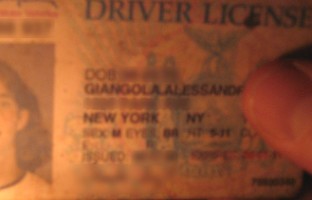Turning out voters
The movement to require voters to show a photo ID before casting a ballot has been gaining momentum. Wisconsin, Texas and South Carolina recently joined Kansas, Georgia and Tennessee in imposing this requirement. Legislatures in Pennsylvania and Ohio will consider strict photo ID bills in coming months, and Missouri voters will consider a referendum on the issue next year. Photo ID laws would have been enacted in four other states by now had they not been met with a governor's veto. (Six more states already have flexible photo ID laws, which give voters a chance to bypass the requirement by signing an affidavit.)
The ostensible goal of photo ID laws seems reasonable enough: to ensure that people who aren't legally registered to vote don't cast a ballot. The likely effect of photo ID laws, however, is to discourage eligible voters, especially blacks, Latinos, the elderly, people with low incomes and the unemployed—those least likely to have obtained a photo ID. A movement supposedly designed to protect the integrity of the electoral process will end up disenfranchising voters.
Read our latest issue or browse back issues.
Photo ID requirements not only act as a de facto poll tax; they address a virtually nonexistent problem. Federal prosecutors spent five years during the Bush administration trying to crack down on voter fraud, but their results were negligible because they could find so few cases. Fewer than 100 people were convicted nationwide, and almost all the cases involved not deliberate fraud but honest confusion. For example, a few immigrants misread voter registration cards and didn't realize that as noncitizens they were not eligible to vote. Some convicted felons and parolees didn't understand that they were not eligible to vote. All these cases were isolated: prosecutors found no evidence of an organized effort to change the outcome of an election—the great worry of those concerned about fraud.
The threat to the integrity of elections comes not from the rare possibility of voter fraud but from existing limits on access to the polls. According to a study by scholars at MIT, as many as 3 million eligible voters did not cast a ballot in 2008 because of problems they encountered with local registration systems. Millions more eligible voters did not vote because lines at the polls were dauntingly long or they could not find the correct polling place.
Meaningful reform focuses not on stricter screening of voters but on making it easier to register and to vote, especially for those who move from state to state. One proposal, called universal voter registration, encourages state governments to draw on their existing databases—from motor vehicle departments, social service agencies and real estate lists—to automatically register citizens as voters. (Built into many of these databases is information on citizenship.)
Voter turnout rates in the U.S. have long lagged behind those of other Western democracies. Rather than focus on overblown concerns about fraud in the voting system, government energies and money would be better devoted to encouraging participation.






